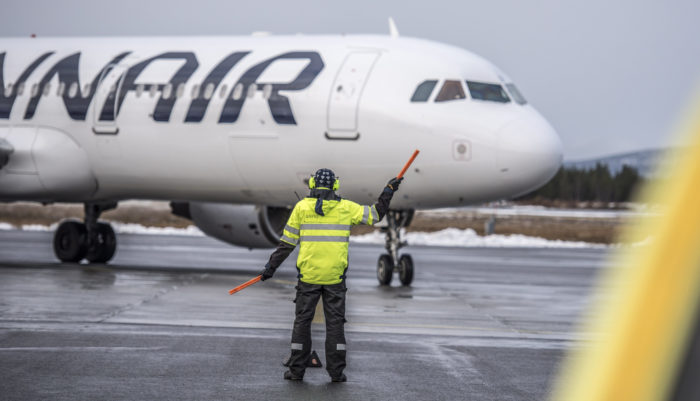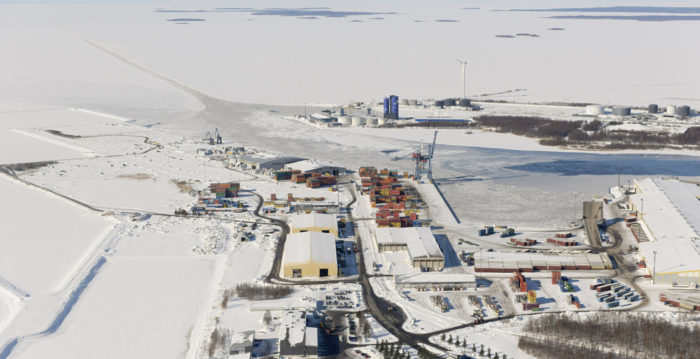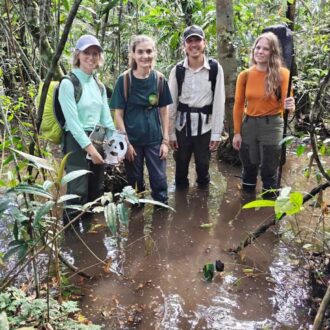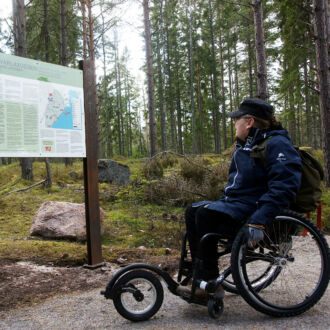Artificial intelligence gets a lot of press, but much of the attention is on applications that are either hypothetical or not very useful. While programmes that play chess are interesting enough, there are also AI applications that solve real-world problems.
Here we look at a few of the many Finnish AI projects that are working to make the world a better place.
Now boarding at Optimal Airport

A ground service worker guides a Finnair plane to its designated parking space at Kittilä Airport in northern Finland.Photo: Otto Ponto/Lehtikuva
Finnish airport operator Finavia and advisory firm Fourkind teamed up to solve a problem at Kittilä Airport in Lapland. A small airport, Kittilä has only 12 parking places for planes, but in the winter as many as 58 flights arrive every day, filled with tourists eager to see the one and only Santa Claus, who lives in Finnish Lapland. One delayed plane could cause a snowball effect, affecting dozens of other flights.
In a unique solution, Finavia and Fourkind used AI to determine the optimal place to park each plane. The system devised the best place to put each aircraft using all available data, such as number of passengers, arrival time, and buses that might be necessary to get passengers from the tarmac to the gates. As the situation developed over the course of the day, the AI could revise its plan in real time to reflect the changes.
Kittilä saw a 61 percent reduction in airport-related delays, producing estimated savings of half a million euros in costs in one month alone. In addition, it caused a drop in emissions, because planes were less likely to have to circle the airport waiting for a space to become available.
All the colours of the rainbow – and more

Avocado art: Spexel.ai has an add-on device for smartphones that allows you to take pictures with a much wider colour spectrum. AI analyses the data – and it might even be able to tell you when an avocado is ripe.Photo: Marjo Tynkkynen/Otavamedia/Lehtikuva
Is that avocado ripe or not? It’s hard to tell because the human eye only sees a limited amount of colours. If you have a spare 20,000 euros, you could buy a hyperspectral imaging system to tell you if your avocados are the right shade of green.
Or, you could turn to Spexel.ai, a project being developed at the University of Helsinki. “We use a simple add-on device which can be attached to a mobile phone,” says assistant professor Arto Klami. “The processing is done by AI in the cloud.”
Researchers can analyse a wide spectrum of light instead of only red, green and blue, which are typically used in imaging. The images taken by your modified phone are analysed by AI to determine a huge range of colours you otherwise couldn’t see.
“Agriculture is one major potential application,” says Klami. “For instance, it can be used to spot plant diseases or soil fertility, or to monitor what types of crops are being grown It can also be used by consumers, if you want to make sure your fruits and veggies are perfect to eat.”
Finding cancer without a knife
The doctors at Helsinki Central University Hospital wanted to minimise invasive biopsies, and asked for help finding prostate cancer using MRIs. They turned to Top Data Science, a young startup that provides AI technologies to solve specific problems. The algorithm used examples of previous MRIs and biopsies and was able to learn how to spot cancer from MRIs alone.
Right fuel, right place

North European Oil Trade’s harbour terminal in Oulu (the cluster of structures at the upper right) has liquid fuel tanks that store up to 67,000 cubic metres.Photo: Hannu Vallas/Lehtikuva
The northern Finnish city of Oulu has a major fuel terminal that handles a variety of North European Oil Trade’s products. The challenge they have is making sure their complicated system of loading and unloading doesn’t result in the mixing of fuels, such as biodiesel accidently being added to gasoline.
Telecom company Telia Finland teamed up with video specialists Finwe and FinCloud to develop an AI-based solution. AI analyses videos of the loading arms to make sure the right fuel is going to the right place, with 99 percent reliability.
Salvation for office workers
Today many organisations still process documents by hand. This is time-consuming and expensive – and boring for the people who have to shuffle forms, invoices and orders. Curious AI came up with an AI solution to not only process documents automatically but to turn the information into structured data.
The Finnish company sees two methods of thinking: fast and automatic to recognise patterns, and deliberate and methodical to find structure. Curious AI makes use of the second method by combining deep neural networks and Bayesian inference, which updates statistical probabilities as more information becomes available.
By David J. Cord, December 2019







